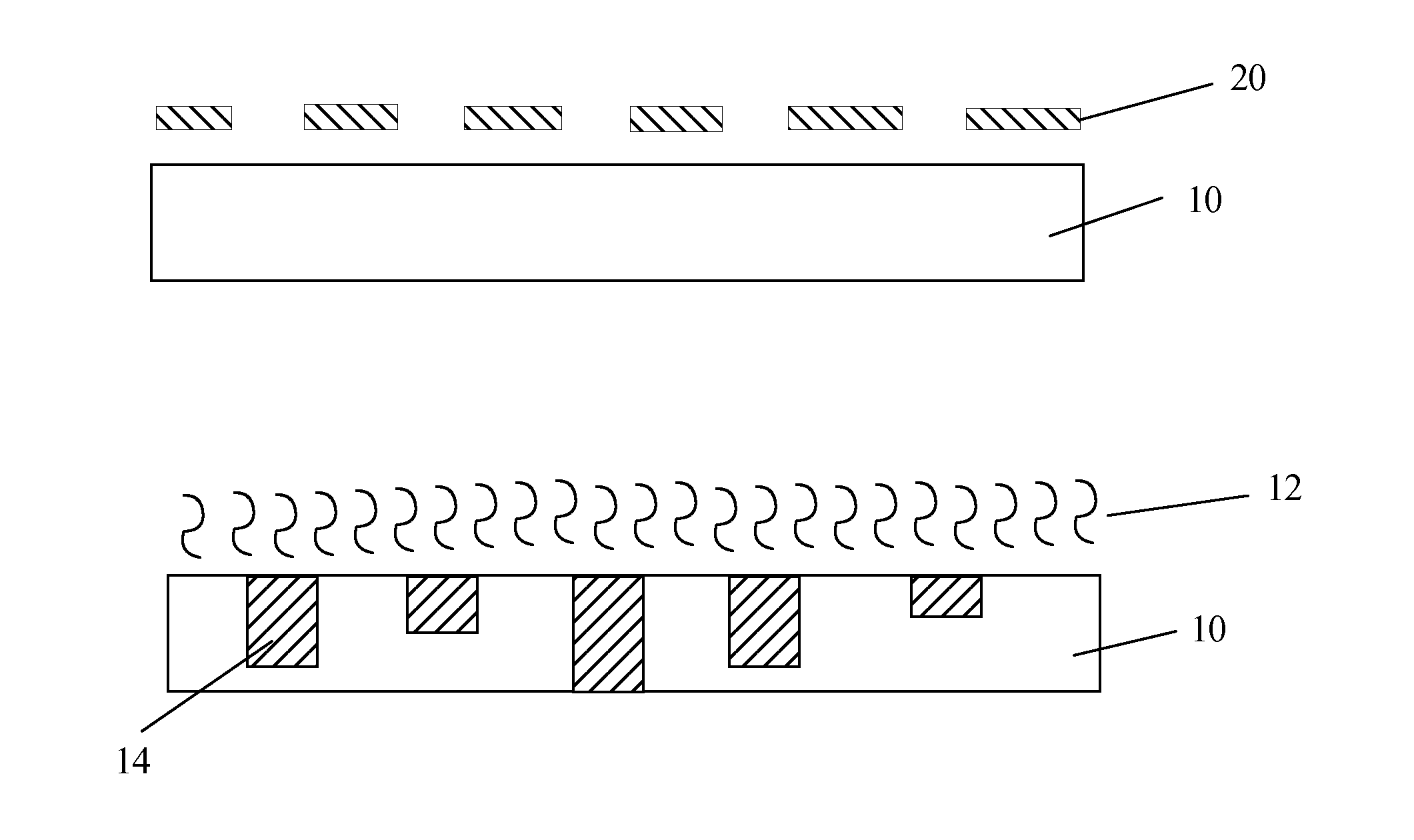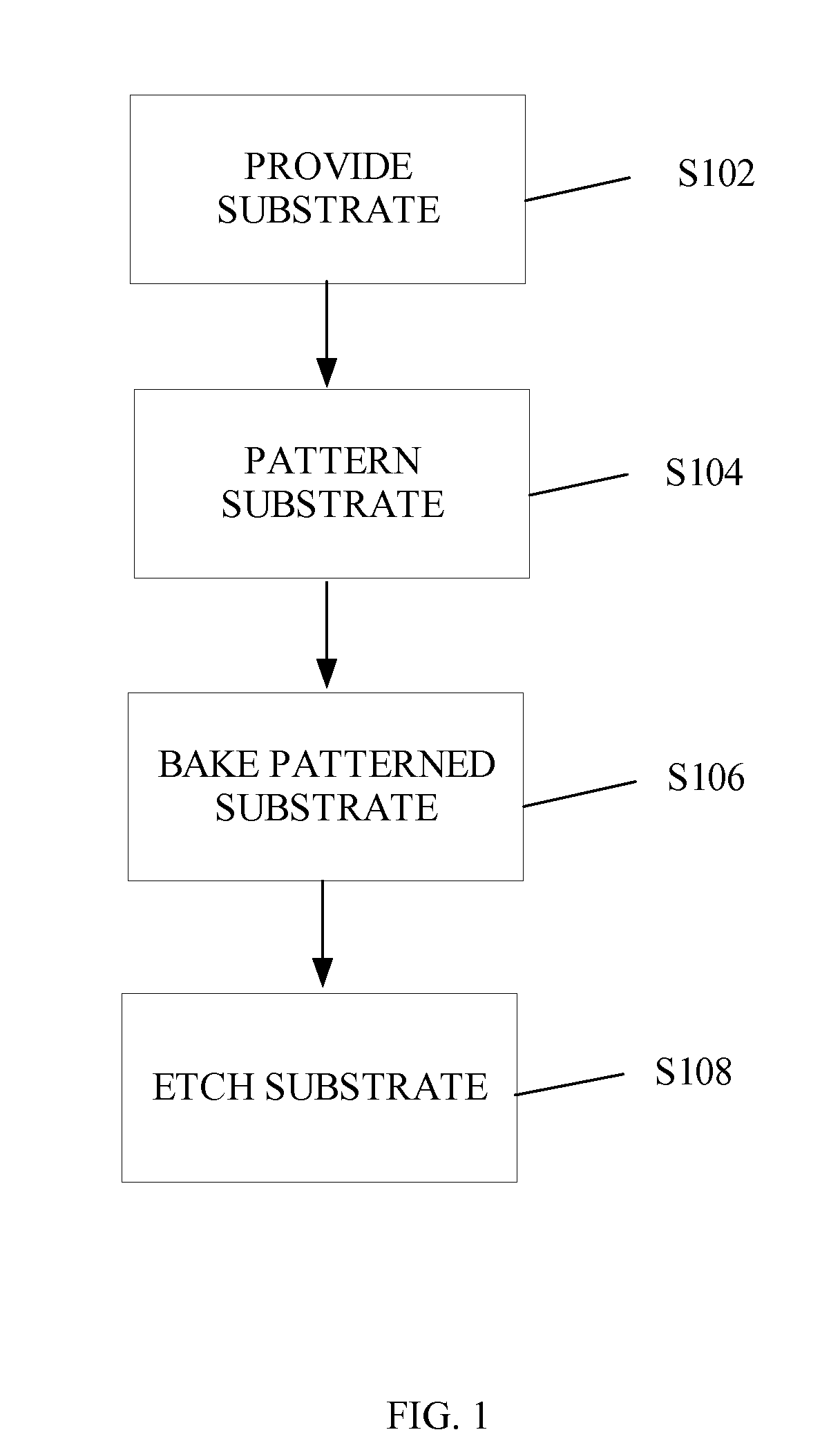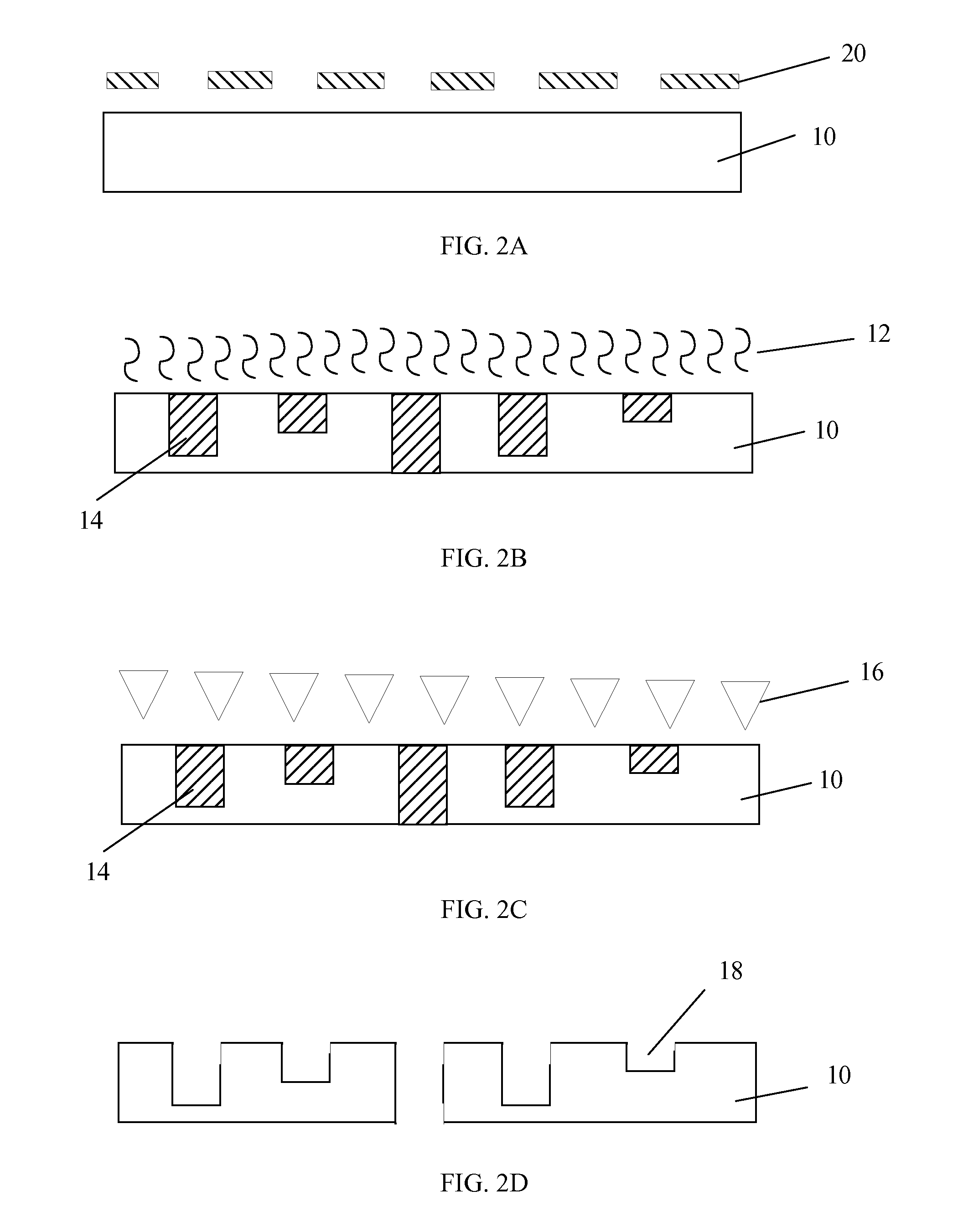Grayscale lithography of photo definable glass
a lithography and glass technology, applied in the field of three-dimensional microstructures, can solve the problems of increased autofluorescence, undesirable opaque portions, and exposed portions that are transformed into opaque ceramic materials, and achieve the effect of increasing autofluorescen
- Summary
- Abstract
- Description
- Claims
- Application Information
AI Technical Summary
Benefits of technology
Problems solved by technology
Method used
Image
Examples
Embodiment Construction
[0008]Various exemplary embodiments of the present invention are directed to a method of forming three-dimensional structures in a photosensitive glass substrate. In particular, according to exemplary embodiments, grayscale lithography techniques are used to partially expose portions of the photosensitive glass substrate to UV light so as to control the amount of substrate that is converted to ceramic material as a result of the exposure. The use of grayscale lithography allows for the formation of through-glass vias (TGVs) where ceramic through-conversion is full (100%), as well as the formation of other areas where the ceramic conversion is less than 100% (e.g., 0%, 10%, 20%, 50%, etc.). Thus, microfluidic and other types of three-dimensional microstructures can be formed with, for example, TGVs, channels and sub-features within the channels, with a single exposure.
[0009]According to exemplary embodiments of the present invention, any suitable grayscale lithography technique may b...
PUM
| Property | Measurement | Unit |
|---|---|---|
| temperature | aaaaa | aaaaa |
| thickness | aaaaa | aaaaa |
| thickness | aaaaa | aaaaa |
Abstract
Description
Claims
Application Information
 Login to View More
Login to View More - R&D
- Intellectual Property
- Life Sciences
- Materials
- Tech Scout
- Unparalleled Data Quality
- Higher Quality Content
- 60% Fewer Hallucinations
Browse by: Latest US Patents, China's latest patents, Technical Efficacy Thesaurus, Application Domain, Technology Topic, Popular Technical Reports.
© 2025 PatSnap. All rights reserved.Legal|Privacy policy|Modern Slavery Act Transparency Statement|Sitemap|About US| Contact US: help@patsnap.com



